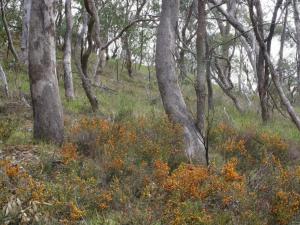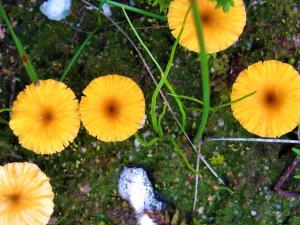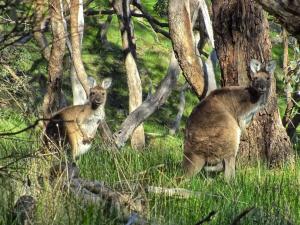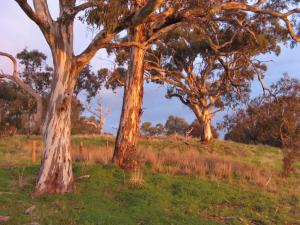What is Special about the Reserve?
The Waite Conservation Reserve in the Adelaide Hills face area, was dedicated to conservation and the furtherance of scientific knowledge in 1992.
IMPORTANT: To preserve the Reserve natural environment and minimise disturbance to wildlife living in the area, dogs are not permitted.
Today the Waite Conservation Reserve is noted as the largest, despite intermittent grazing over most of the 20th century. The Reserve remains the best surviving example of Grey Box Grassy Woodland.
Home to hundreds of species of native plants as well as kangaroos, koalas and echidnas, it is a valuable asset to the University of Adelaide and the people of South Australia.
The Reserve now comprises 121 hectares, of which 110 hectares are under Heritage Agreement. Magnificent remnant grey box trees and native understorey species are also to be found in the northwest section of The Waite Arboretum.
The Waite Conservation Reserve is open to the public from dawn to dusk every day except on Fire Ban Days in the Mt Lofty Ranges fire district (CFS Hotline 1300 362361).
Please see our map of tracks in the Waite Conservation Reserve.
Open to the public
Open every day from dawn til dusk (except on days of extreme fire danger) and offers a range of facilities, activities and events for the community.
- What's On Calendar for our program of events.
- Walking Bees: first Saturday and third Sunday of each month.
- For more information please go to The Friends of the Waite Conservation Reserve website
- Follow us on Facebook
History of the Waite Conservation Reserve
In October 1913 Peter Waite wrote to the Premier of South Australia, Hon. A. H. Peake, and the Chancellor of the University of Adelaide, the Rt. Hon. Sir Samuel Way, informing them that he intended presenting the Urrbrae property of 54 hectares to the University of Adelaide. The eastern half was to be used for scientific studies related to agriculture and the western half as a public park.
In 1915 Peter Waite bought the Claremont Estate of 21 hectares and 45 hectares of the foothill part of the Netherby Estate, both of which adjoined Urrbrae, transferring their ownership to the University of Adelaide.
The Reserve is of great environmental value because it:
- Protects precious remnant vegetation
- Is one of the best surviving examples in the Adelaide Hills of Grey Box Grassy Woodland, a depleted and poorly conserved vegetation type
- Is home to 43 uncommon, rare, vulnerable or endangered plant species
- Is a habitat for native animals, for example echidnas, koalas, kangaroos, as well as butterflies, reptiles and birds
- Is a valuable resource for ongoing research in ecology, biological control, and related fields
- Is a valuable and accessible resource for teaching environmental management to secondary and tertiary students
- Provides a beautiful and tranquil environment for bushwalking, birdwatching and other quiet recreation
- Has easy access to bushland for people living in urban Adelaide.
The Waite Conservation Reserve support
Much work maintaining the Reserve is carried out by dedicated volunteers and The Friends of the Waite Conservation Reserve.
- Natural Heritage Trust Envirofund
- SA Urban Forest Biodiversity Program
- Sustainable Resources / SA Dept of Water, Land and Biodiversity Conservation (DWLBC)
- Activ-8 Grant Program (funded by the SA Government)
- SA Heritage Agreement Grant
- Work for the Dole (funded by the Commonwealth Government)
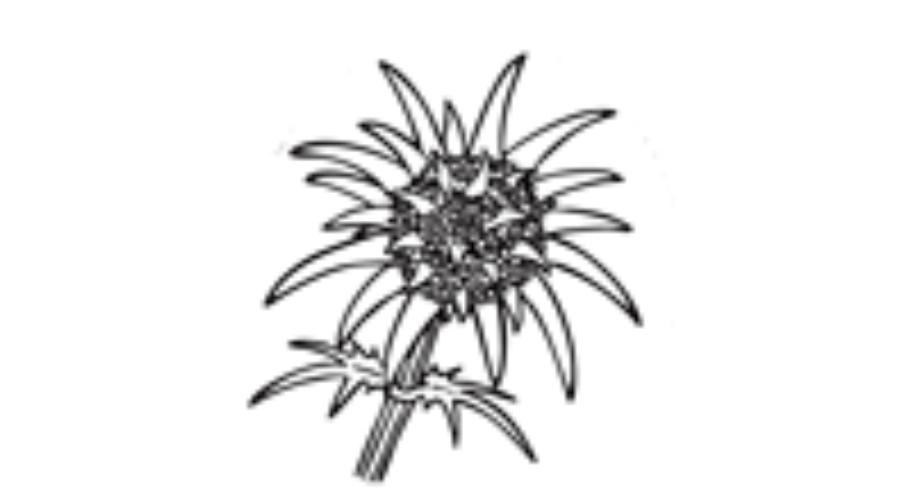
The Waite Conservation Reserve Logo
The logo of the Waite Conservation Reserve features the blue devil - Eryngium rostratum , a spiny herb that occurs in the Reserve and has conservation status.

